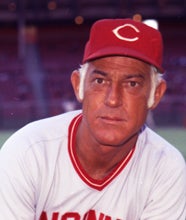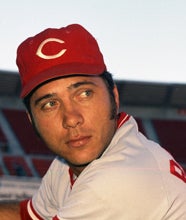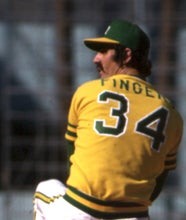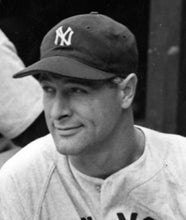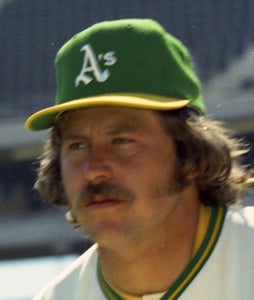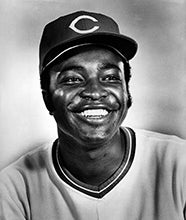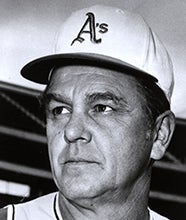- Home
- Our Stories
- A’s shut down Big Red Machine in thrilling Game 7
A’s shut down Big Red Machine in thrilling Game 7
It was a matchup of two soon-to-be dynasties that created one of the most exciting World Series in history.
On Oct. 22, 1972, the Oakland Athletics eked out a 3-2 victory over the Cincinnati Reds in Game 7 and captured the first of their three consecutive World Series titles in the early 1970s. The A’s rode the strength of their stellar starting pitching to defeat a Reds squad that would put together its own run of dominance later in the decade.

The 1972 World Series was a clash of styles, affectionately dubbed “The Hairs vs. The Squares.” The A’s, aka “The Hairs,” were seen as a battling bunch of players that often clashed with their eccentric owner, Charlie Finley. Donning day-glo yellow uniforms, thick mustaches and unpredictable personalities, the A’s demanded attention any time they played.
The Reds, or “The Squares,” boasted an offense that was anything but dull. Led by 1972 MVP Johnny Bench at catcher, first baseman Tony Pérez, second baseman Joe Morgan and outfielder Pete Rose, Cincinnati boasted future perennial All-Stars and Hall of Famers in an iconic lineup that would come to be known as “The Big Red Machine.”
Future Hall of Fame managers Sparky Anderson and Dick Williams managed the Reds and A’s, respectively.
The stage was set with budding stars, but the A’s entered the Fall Classic without one of their brightest. Future Hall of Famer Reggie Jackson pulled his hamstring while stealing home in Game 5 of Oakland’s ALCS triumph over Detroit, and would be sidelined for the series.
“If somebody had told me that night in the hospital in Cincinnati, that I'd be known as Mr. October someday – that I'd set all sorts of World Series records and have the greatest night the Series had ever seen, I wouldn't have known whether to laugh or cry,” Jackson later wrote in his autobiography, Reggie. “I was hurt and miserable and I felt cheated.”

The A’s would need an unsung hero, and they found one in backup catcher Gene Tenace. Tenace, who had hit only five home runs all season, slugged two homers in Game 1 of the World Series as the A’s prevailed 3-2 and claimed a 1-0 series lead. Tenace would go on to hit four total home runs in the series – tying the all-time Fall Classic mark set by legends Babe Ruth and Lou Gehrig – and drive in nine of the A’s 16 total runs to capture a most unlikely World Series MVP award.
“It's hard to explain how those things happen,” Tenace would later reflect. "I was in kind of a zone mentally, and every pitch I saw from the Cincinnati pitching staff looked down the middle to me.”
After Tenace’s Game 1 heroics, the A’s jumped out to a 3-1 series lead thanks to three one-run victories. As a whole, the 1972 Fall Classic was among the most evenly matched in history with six of the seven games decided by just one run. Each team collected 46 total hits and batted an identical .209.
With their backs against the wall, the Reds squeezed out a 5-4 victory in Game 5 in Oakland, then followed up with the only rout of the series by winning 8-1 in Game 6. It seemed Cincinnati finally had its “Big Red Machine” firing on all cylinders heading into the decisive Game 7.
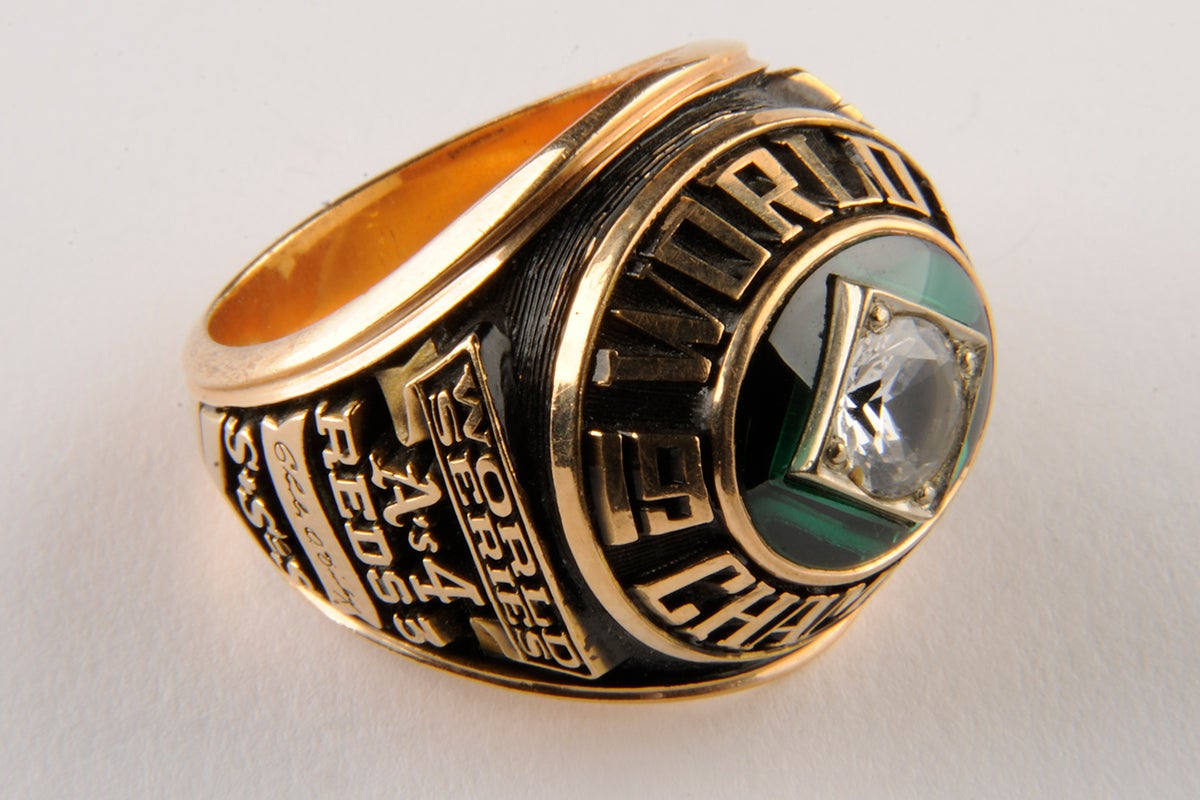
The Machine, however, was derailed by Hall of Fame pitcher Jim “Catfish” Hunter. Coming on in relief in the bottom of the fifth with a slim 1-0 lead and the bases loaded for the Reds, limited the damage to one run. It was the boost the A’s needed as Oakland scored two runs in the sixth, while the bullpen combination of Hunter, Ken Holtzman and Rollie Fingers kept the powerful Reds at bay and held on for the 3-2 victory.
It was the first World Series title for the A’s since the team was based in Philadelphia in 1930. The A’s won additional titles in 1973-74, followed by two titles for the Reds in 1975-76.
“Everybody says the Cincinnati-Boston World Series in 1975 was the best in history,” Sparky Anderson wrote in his autobiography, Sparky. “I don't. I'll always maintain that the best Series I was ever involved in was the 1972 World Series against Oakland. That's because those were the two of the finest ball clubs to go against each other that you'll ever see in I don't know how long.”
Matt Kelly was the communications specialist at the National Baseball Hall of Fame and Museum

